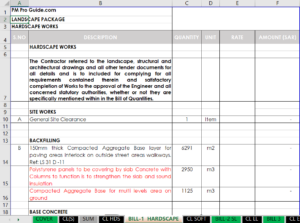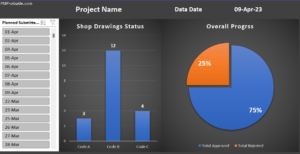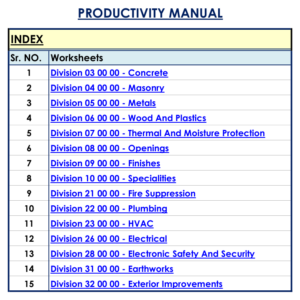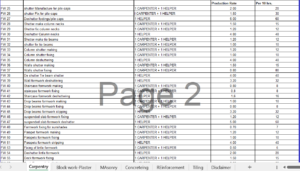Table of Contents
Introduction
Retrospective delay analysis is a method that is commonly used in the construction industry to identify and analyze delays that have occurred on a project. This type of analysis is performed after the completion of a project and involves reviewing all of the relevant documentation and data to determine what caused delays and how they could have been avoided.
Retrospective delay analysis can be a valuable tool for construction professionals, as it can help them identify ways to improve their processes and procedures in the future. In this article, we will discuss the basics of retrospective delay analysis, including its benefits, the steps involved in performing an analysis, and some tips for ensuring a successful analysis.
What is Retrospective Delay Analysis?
Retrospective delay analysis is a method used to analyze delays that have occurred on a construction project after its completion. This analysis involves reviewing all relevant documentation, including project schedules, contracts, change orders, and other relevant data, to determine the causes of delays and how they could have been avoided.
The purpose of retrospective delay analysis is to identify the root causes of delays and to develop strategies for avoiding similar delays in the future. This can help construction professionals to improve their processes and procedures, resulting in more efficient and cost-effective projects.
Benefits of Retrospective Delay Analysis
There are many benefits to performing retrospective delay analysis, including:
- Identifying the root causes of delays: By reviewing all relevant documentation, retrospective delay analysis can help identify the specific causes of delays on a project.
- Developing strategies for avoiding similar delays in the future: By identifying the root causes of delays, construction professionals can develop strategies for avoiding similar delays in the future.
- Improving processes and procedures: By identifying areas for improvement, retrospective delay analysis can help construction professionals to improve their processes and procedures, resulting in more efficient and cost-effective projects.
Steps Involved in Retrospective Delay Analysis
There are several steps involved in performing a retrospective delay analysis, including:
- Gathering all relevant documentation: To perform a retrospective delay analysis, it is essential to gather all relevant documentation related to the project, including project schedules, contracts, change orders, and other relevant data.
- Identifying the critical path: The next step in performing a retrospective delay analysis is to identify the critical path of the project. The critical path is the sequence of tasks that must be completed on time to ensure that the project is completed on schedule.
- Identifying the causes of delays: After identifying the critical path, the next step is to identify the causes of delays. This may involve reviewing project schedules, change orders, and other relevant data to determine where delays occurred and what caused them.
- Developing strategies for avoiding similar delays in the future: Once the root causes of delays have been identified, the next step is to develop strategies for avoiding similar delays in the future. This may involve making changes to processes and procedures or developing new tools or technologies to improve project efficiency.
Tips for a Successful Retrospective Delay Analysis
There are several tips for ensuring a successful retrospective delay analysis, including:
- Start early: It is essential to begin the retrospective delay analysis process as early as possible to ensure that all relevant documentation is available.
- Be thorough: Retrospective delay analysis requires a thorough review of all relevant documentation, including project schedules, contracts, change orders, and other relevant data.
- Involve all stakeholders: To ensure a successful retrospective delay analysis, it is essential to involve all stakeholders, including project managers, contractors, and subcontractors.
- Use a structured approach: A structured approach to retrospective delay analysis can help ensure that all relevant information is reviewed and analyzed systematically.
Conclusion
Retrospective delay analysis is an essential tool for construction professionals. By analyzing delays that have occurred on a project, construction professionals can identify the root causes of the delays and develop strategies for avoiding similar delays in the future. By improving processes and procedures, construction professionals can achieve more efficient and cost-effective projects.
It is important to note that retrospective delay analysis is not a substitute for proactive project management. Rather, it is a tool that can be used to improve project management practices and identify areas for improvement.
In conclusion, retrospective delay analysis is a valuable tool for construction professionals. By identifying the root causes of delays and developing strategies for avoiding similar delays in the future, construction professionals can improve their processes and procedures, resulting in more efficient and cost-effective projects. It is essential to start the analysis process as early as possible and to be thorough in the review of all relevant documentation. By using a structured approach and involving all stakeholders, construction professionals can ensure a successful retrospective delay analysis.
FAQs
- What is the difference between retrospective delay analysis and forensic delay analysis?
Retrospective delay analysis is performed after the completion of a project and involves reviewing all relevant documentation to identify the root causes of delays and develop strategies for avoiding similar delays in the future. Forensic delay analysis, on the other hand, is performed during the project to identify and resolve delays as they occur.
- Can retrospective delay analysis be used to apportion blame for delays?
Retrospective delay analysis is not intended to apportion blame for delays, but rather to identify the root causes of delays and develop strategies for avoiding similar delays in the future.
- What is the importance of identifying the critical path in retrospective delay analysis?
Identifying the critical path is an essential step in retrospective delay analysis because it allows construction professionals to determine which tasks are critical to the project schedule and which delays may have caused the project to fall behind schedule.
- What types of documentation are required for retrospective delay analysis?
To perform retrospective delay analysis, it is essential to gather all relevant documentation related to the project, including project schedules, contracts, change orders, and other relevant data.
- What are some common causes of delays in construction projects?
Some common causes of delays in construction projects include design changes, weather conditions, material shortages, labor disputes, and equipment breakdowns.
- How can construction professionals use the results of retrospective delay analysis to improve their processes and procedures?
By identifying the root causes of delays and developing strategies for avoiding similar delays in the future, construction professionals can improve their processes and procedures, resulting in more efficient and cost-effective projects. This may involve making changes to project management practices, developing new tools or technologies, or improving communication and collaboration among project stakeholders.
Related Articles
Window Analysis Technique – Step By Step Guide
Delay Analysis Mastery | Techniques And Best Practices
For more delay analysis in a video form, you may check this one.


























